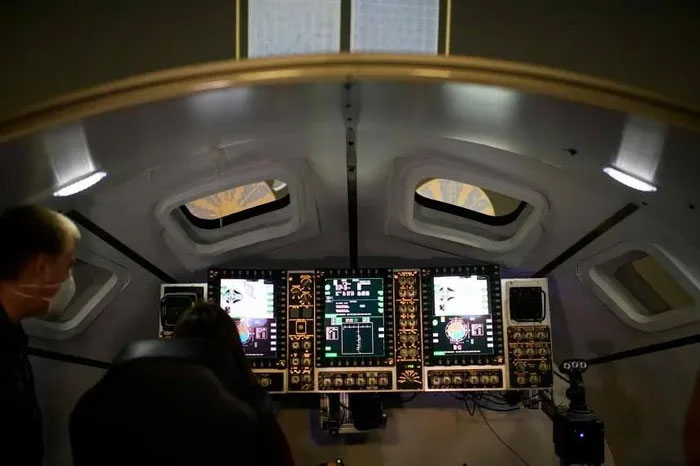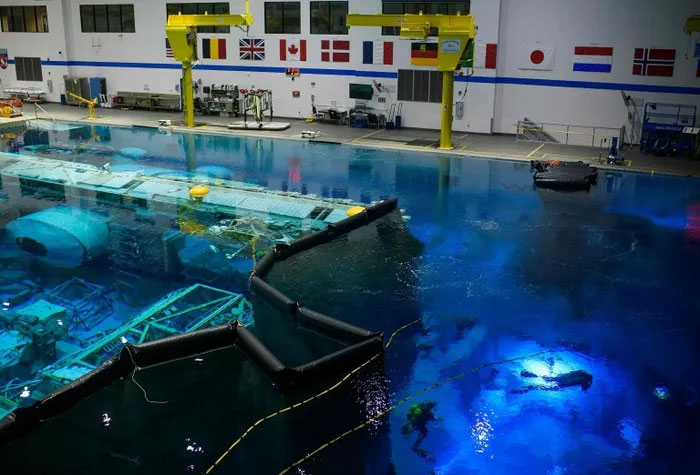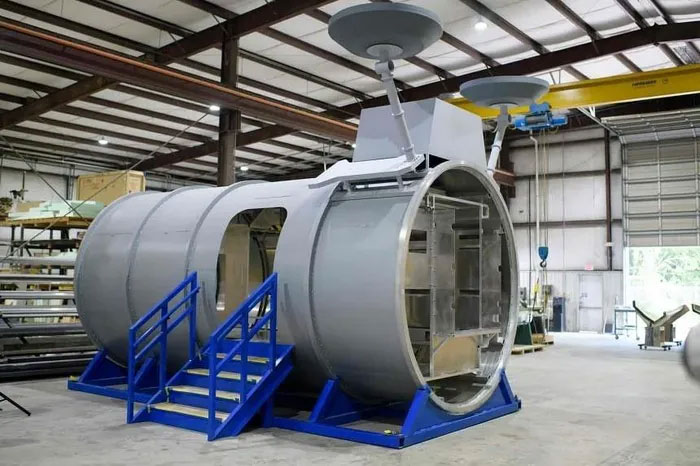Artemis 1 Moon Mission – the project paving the way for the return of humans to the Moon in 2024 by the United States – is set to launch at the end of this month.
Rick LaBrode has worked at NASA for 37 years, but he states that the mission to return to the Moon is so far the “pinnacle moment of my career”. This will be the first time a crewed capsule is sent to the Moon since the Apollo missions in 1972.
Rick LaBrode is the chief flight director for Artemis 1 – the first phase of the Artemis mission – which is expected to lift off at the end of August.
The Artemis 1 mission is programmed to operate autonomously, with no crew on board. The mission’s goal is to test the effectiveness of the heat shield on the Orion crew module (also known as the capsule), located at the top of the launch system.
“This is really more exciting than anything I’ve ever been involved in,” LaBrode told reporters at NASA’s Mission Control Center in Houston, Texas.
The 60-year-old shared with AFP that the time leading up to launch day is likely to be a long night of anticipation – and he might find it hard to get much sleep.
“I will be very excited. I certainly won’t be able to sleep much,” he said, in front of the iconic giant screens of the mission control system.

White Flight Control Room at the Johnson Space Center Mission Control. (Photo: AFP).
The NASA Artemis mission was officially launched in 2017. According to NASA, the mission aims to land the first woman and the first person of color on the Moon. Through this project, NASA will explore various lunar surfaces and establish the first long-term presence there.
Artemis 1 will begin with the launch of the world’s most powerful rocket – the Space Launch System (SLS).
The launch will propel the Orion spacecraft into orbit around the Moon. The spacecraft will spend 42 days in space before returning to Earth.
In 2024, astronauts will board the Orion spacecraft for the same journey, and Americans will once again set foot on the Moon.
Throughout the Artemis 1 mission, a team of NASA personnel will remain at Mission Control 24 hours a day. The center has been renovated and upgraded for this special event. Teams have also been training for this moment for three years.
“This is a completely new journey, with a completely new rocket, a completely new spacecraft, and a completely new control center,” Brian Perry, a Flight Dynamics Officer who will oversee Orion’s orbit right after launch, shared with AFP.
Preparing for the Historic Flight
Astronauts are training in the world’s largest swimming pool at the Neutral Buoyancy Laboratory, which is over 200 meters long, 100 meters wide, and 40 meters deep.

Astronauts training in the “world’s largest” swimming pool. (Photo: AFP).
One side of the Neutral Buoyancy Laboratory is designed to simulate the International Space Station and is submerged underwater.
The other side recreates the lunar environment at the bottom of the pool, complete with giant model rocks.
Lisa Shore, the deputy director of the laboratory, stated: “Just in the last few months, we have started pouring sand at the bottom of the pool. We received that large rock just two weeks ago. Everything is very new to us, and there is still much preparation underway.”
Underwater, astronauts can experience a near-weightless sensation. To prepare for lunar missions, the simulated environment must recreate one-sixth of the Moon’s gravity.
Astronauts are guided remotely from a room above the pool, with a 4-second communication delay that they will experience on the Moon’s surface.
Six astronauts have already been trained. The remaining six will undergo training at the end of September and will wear the new space suits designed by NASA specifically for the Artemis 1 Moon mission.
“The golden age of the laboratory was when we were still flying the shuttle and assembling the space station,” John Haas, the head of the laboratory office, shared with AFP.
At that time, 400 training sessions with astronauts in full space suits occurred annually, compared to about 150 today. However, the Artemis program has prompted the entire laboratory to rethink increasing the number of training sessions.
A New “Golden Age” Approaches
Each training session in the pool can last up to 6 hours.
“It’s like running a marathon twice, but using just your hands,” astronaut Victor Glover told AFP. Glover returned to Earth last year after spending 6 months on the International Space Station.
Using virtual reality headsets, astronauts can familiarize themselves with walking in the dark conditions of the Moon’s South Pole, where Artemis will land.
There, the Sun barely rises above the horizon, meaning there are always long shadows that reduce the astronauts’ visibility.
Astronauts will also need to get accustomed to the new spacecraft, such as the Orion capsule, and the equipment on board.

Training flight module simulating the Habitation and Logistics Outpost of the future lunar Gateway space station displayed at the Gateway Facility in Houston. (Photo: AFP).
During the simulation, staff are trained to dock at the future lunar Gateway space station.
Elsewhere at the space center, a replica of the Orion capsule, sized at just 9 cubic meters for four people, is being utilized.
Debbie Korth, deputy director of the Orion program, told AFP: “They perform a lot of training on how to execute emergency escapes here.”
Korth, who has worked on Orion for over a decade, noted that everyone in Houston is excited about the return to the Moon and the future of NASA.
“I feel like this is a new golden age,” she shared.
Notably, NASA is allowing the public to send their names to orbit the Moon aboard the Orion spacecraft by registering through the agency’s website.


















































